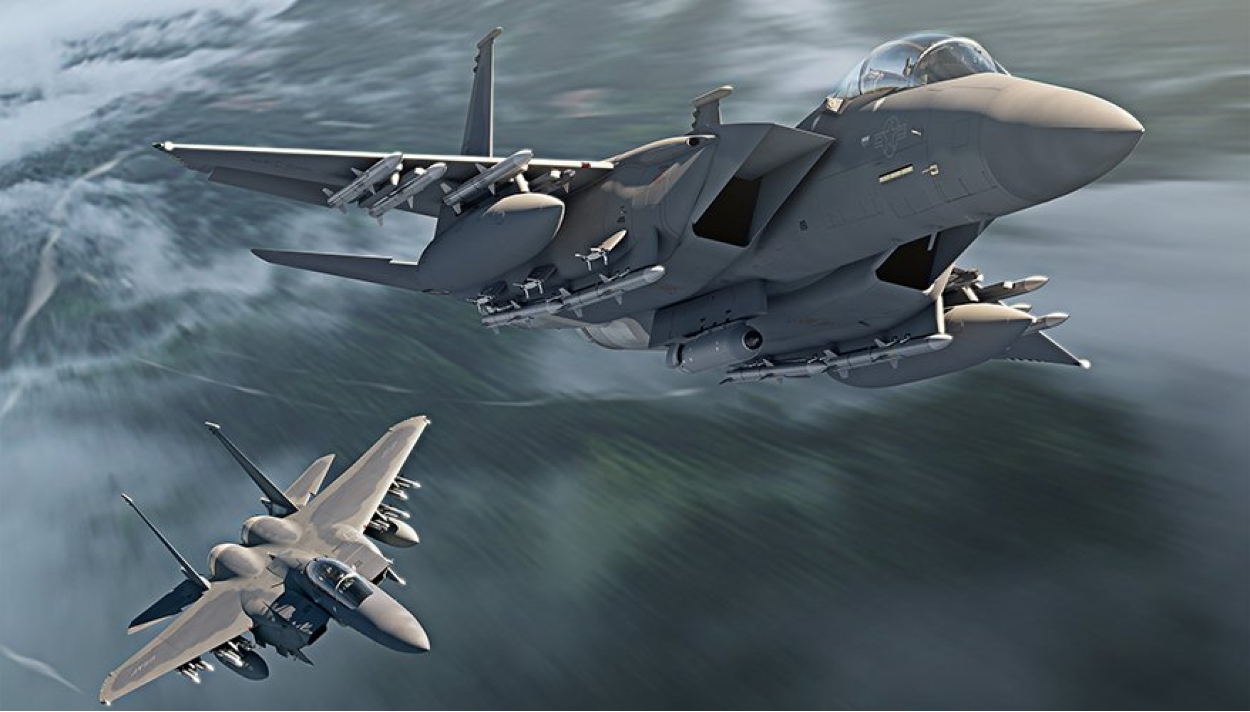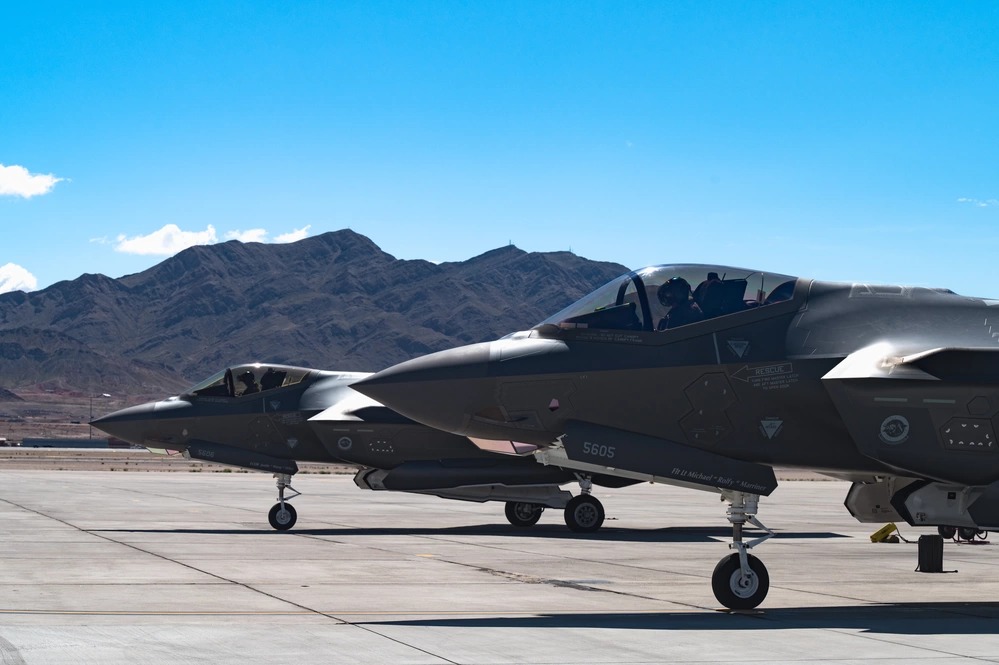Despite losing nearly a billion dollar in a classified program on the production of missiles and fire-control systems, Lockheed Martin, arguably the world’s largest defense contractor, seems sanguine that it will have a roaring business in the Indo-Pacific region, where many countries, fearful of China, are going to enhance their air-power.
Lockheed Chief Financial Officer Jay Malave revealed last week (April 23) that the company could incur in excess of $1 billion in potential losses on the classified program, though its CEO Jim Taiclet characterized the program as “a long-running franchise that will deliver a strong return on investment after going through a period of teething pains.”
However, there seem to be other areas that Lockheed is looking at positively. Its F-35 fighters are in demand in the Indo-Pacific, where more and more countries are said to be realizing the growing importance of “air superiority,” an important lesson that has emerged from the Ukraine conflict.
Singapore is acquiring its next-generation fighter fleet as it prepares to sundown its current fleet of F-16s starting in the mid-2030s.
Reportedly, in 2020, the U.S. State Department’s Defense Security Cooperation Agency had approved an estimated $2.75 billion sale of up to 12 Lockheed Martin-built F-35B short take-off and vertical landing fighters to Singapore — the first four of which are supposed to be delivered by 2026.
If one goes by an official release of the Lockheed by 2035, “300+ F-35s will call the Indo-Pacific region home”. This includes F-35s from the U.S., Australia, Japan, the Republic of Korea and Singapore.
Secondly, the company recognizes that sustainment is critical in ensuring readiness. It promises to remain focused on strengthening the repair capacity and supply chain maturity across its various programs.
“Japan is home to one of three Final Assembly and Check Out (FACO) facilities at Komaki South in Nagoya. In addition, the stand-up of the North Asia Regional Maintenance, Repair, Overhaul, and Upgrade (MROU), also in Nagoya, was completed in 2020. This facility will be utilized by JASDF and USAF jets,” it says, adding that “our platforms continue to support the allied mission to maintain stability and security in the Indo-Pacific region.”
Thirdly, the F-35 facilitates interoperability with the United States and other allies and partners across the globe.
According to Steve Over, Lockheed Martin’s director of F-35 international business development, “If you think about these conflicts, virtually no one is facing conflict alone, and so it’s about [building] coalition capacity. The beauty of the F-35 is you’ve got an airplane operated by not only the United States but also other nations in the Indo-Pacific such as Japan, Australia, and South Korea, as well as several European countries”.
The point is that the F-35 has, as Over says, the potential to be the “perfect integrator in a joint all-domain environment. There’s absolutely a future world out there where the pilot of an F-35 is only going to contribute a very, very accurate set of targeting coordinates that some other land or sea-based effector is then going to actually target.”
In a coalition force made up of multiple nations, “anybody’s F-35 can be plugged into the network” to provide that targeting data.
Over argues. “It doesn’t have to be a U.S. airplane; it doesn’t have to be a Singaporean airplane. And that level of interoperability is one of the things that is becoming a hallmark of the F-35 for all the customers that are using it. It’s really an incredible force multiplier.”
In other words, the F-35 is said to be strengthening “Allied Partnerships in the Indo-Pacific.” In this regard, it is pointed out how the fighter aircraft has participated in regional military exercises such as Exercise Vigilant Defense (in October 2023, American F-35s and F-16s trained with South Korean F-35s and aircraft from the Royal Australian Air Force), Joint Training Over the East China Sea (in Fall 2023, U.S. Air Force F-35s trained with Japanese aircraft over the East China Sea), and Exercise Elang Ausindo( in Sept. 2023, a bilateral air combat exercise brought together six Australian F-35As and six Indonesian F-16s to generate tactics and techniques of air operations).
Besides, it is pointed out how, in September 2023, Australian F-35s were deployed to Japan for the first time. “Developing a mutual understanding in how we each operate the F-35A is essential to how Australia and Japan contribute to the collective security of the Indo-Pacific,” according to Air Marshal Rob Chipman, chief of Australia’s Air Force. “Our aviators will develop their skills deploying overseas, 5,800 kilometers from home, and forge professional relationships with their Japanese counterparts.”
In this collaborative scheme of things, other U.S. producers also figure alongside the F-35 or, for that matter, the Lockheed. For instance, Singapore’s Boeing-made F-15SGs—which have been in service since 2009—remain an important part of the country’s fighter fleet.
Boeing’s latest F-15 variant, the F-15EX, completed its first flight in February 2021, and the company began delivering the aircraft to the U.S. Air Force a month later. It is now said to be on Singapore’s radar for further acquisition.

Meanwhile, in August 2023, Indonesia signed a memorandum of understanding with Boeing to acquire up to 24 F-15EX air superiority fighters, pending U.S. government approval.
Above all, the United States is coming under increasing pressure from its military to augment its own air power in the Indo-Pacific, given the China factor. Andrew Hunter, assistant secretary for acquisition, technology, and logistics at the U.S. Air Force, says that Washington is observing developments in the region to inform its own acquisition priorities.
“The Air Force is really intensifying and tightening the relationship with the operational community to inform our acquisition programs so that we’re actually delivering capabilities that make a difference in the near term and in the far term against the operational challenges that they see,” Hunter said during a briefing at the Singapore air-show in February.
The U.S. is talking of “to strengthen, nurture and extend and deepen all of our relationships with the partners in the region,” and in this regard, it is having, as Hunter says, “a huge focus in the Air Force” on the Indo-Pacific and Southeast Asia.
It may be noted here that China has added many cutting-edge fighters to its inventory in recent years, leading to speculation that China may soon have the world’s largest air force.

Experts believe that China is producing the J-20 at over roughly 100 airframes per year, compared to 135 airframes a year of F-35. And here, while most J-20s are for China’s own use, 60 to 70 F-35s that are produced in the U.S. are exported to its allies and partners.
China is also reported to be accelerating the production of the J-16, J-10, and its sea variants. The J-16, a multi-role fighter, produces more than 100 airframes annually, while the J-10 produces less than 40 airframes per year.
Daniel Rice, a China expert at the Brute Krulak Center for Innovation and Future Warfare at Marine Corps University, argues that if China maintains its current production rate, it may overtake the U.S. in producing the latest fighter aircraft.
However, there is said to be a quality-quantity mismatch between the American and Chinese fighters. The J-20 is regarded roughly as a 4.5-generation aircraft, unlike America’s F-22 and F-35. In fact, the U.S. Air Force is concurrently developing its own sixth-generation fighter called Next Generation Air Dominance.
Similarly, the J-10C is not quite the USAF’s F-15EX but rather “the low-end, or high-low mix of that version,” says Rice.
However, notwithstanding this quality-versus-quantity assessment, in its 2023 Report on the Military and Security Developments Involving the People’s Republic of China (CMPR), the U.S. admits that the People’s Liberation Army Air Force (PLAAF) and PLAN (PLA Navy) Aviation together constitute the largest aviation force in the Indo-Pacific region.
The report says China is rapidly catching up to Western air forces in the region, which is a huge challenge that America, along with its allies and partners, must address. Maintaining air superiority in the Indo-Pacific is argued to be the key, and Lockheed and Boeing have a great opportunity to contribute here.
- Author and veteran journalist Prakash Nanda is Chairman of the Editorial Board – EurAsian Times and has commented on politics, foreign policy, and strategic affairs for nearly three decades. A former National Fellow of the Indian Council for Historical Research and recipient of the Seoul Peace Prize Scholarship, he is also a Distinguished Fellow at the Institute of Peace and Conflict Studies.
- CONTACT: prakash.nanda (at) hotmail.com
- Follow EurAsian Times on Google News




